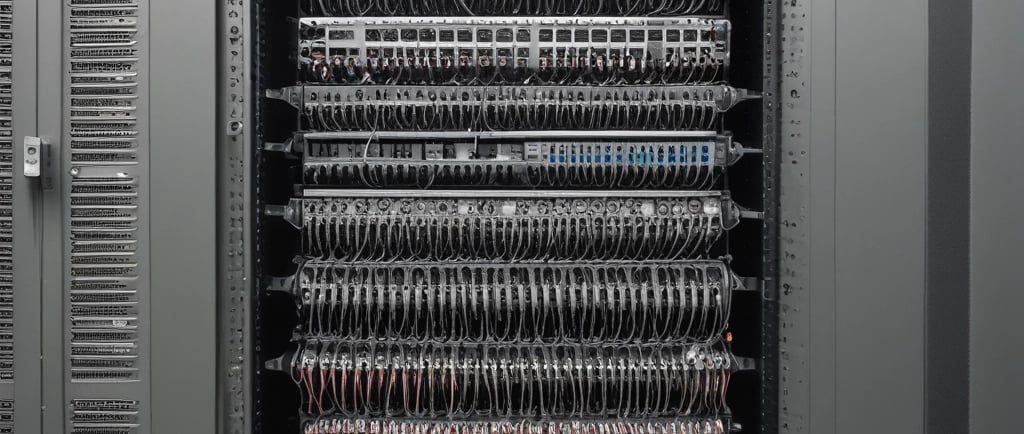Bridging Physical and Cyber Security
When physical and cyber defenses operate as one, organizations gain more than security—they gain insight. Integrated analytics reveal patterns of behavior, identify emerging threats, and automate responses across both environments.
CYBER SECURITY
Infosec Team
10/1/20253 min read


In today’s connected world, the line between physical and digital security no longer exists. A door controller on the network, a surveillance system accessible through the cloud, or a smart sensor in a school—all are part of a unified risk landscape.
At Omni Data, we believe the most effective protection strategy is one that views physical and cyber threats through a single lens. Bridging these two domains isn’t just a best practice—it’s a necessity for anyone responsible for life safety, data integrity, or business continuity.
Why Physical and Cyber Security Must Work Together
In the past, organizations treated these disciplines separately.
Physical security teams managed access control, cameras, and alarms.
IT and cybersecurity teams handled firewalls, passwords, and networks.
But the growth of IP-based systems and cloud-connected devices has erased those boundaries. A single vulnerability—whether a compromised password or an unsecured camera—can expose an entire organization.
Today, more than 70% of security devices communicate over the same networks that carry sensitive business data. That convergence means cyber weaknesses can create physical risk, and physical breaches can lead to digital compromise.
Real-World Examples of Converged Risk
Networked Cameras and NVRs
Poorly configured video systems can be exploited as backdoors into corporate networks, allowing attackers to move laterally or disable critical surveillance.Access Control Systems
Credential databases often store personally identifiable information (PII). A breach of that system compromises both physical security and privacy.Building Automation and IoT Sensors
Devices managing HVAC, lighting, or occupancy data can become entry points for cyber intrusion—or provide attackers with intelligence about when facilities are empty.
These risks highlight why an integrated defense strategy is no longer optional—it’s fundamental to modern safety and compliance.
The Omni Data Approach: SecNet and Beyond
Omni Data’s SecNet™ framework unites physical and network security disciplines under one umbrella. We start by assessing how devices, data, and people interact within your environment—then design layered protection that covers both sides of the equation.
Key principles include:
Network Segmentation: Isolating life-safety and security devices from general IT traffic to reduce exposure.
Zero-Trust Access: Authenticating every connection—whether a technician, user, or sensor.
Secure Configuration and Hardening: Updating firmware, disabling unused ports, and enforcing password policies.
End-to-End Monitoring: Integrating intrusion detection, video analytics, and network threat intelligence into a single dashboard.
By aligning your physical access policies with cyber access controls, we create a resilient architecture that can detect, contain, and respond to incidents quickly.
Compliance and Insurance Benefits
Regulatory frameworks are evolving to reflect this convergence. Standards such as NFPA 3000 (Active Shooter/Hostile Event Preparedness), NIST 800-53, and CISA’s Cyber-Physical Systems Security Guidance all emphasize the need for coordinated protection.
Organizations that demonstrate unified security posture not only reduce liability but also strengthen eligibility for insurance coverage and grant funding—particularly in education, healthcare, and municipal sectors.
Human Factors: The Bridge Between Systems
Technology alone can’t solve the challenge. True convergence happens when teams collaborate.
Facilities, IT, and Security Directors must share visibility into incidents and response procedures.
Regular cross-training ensures that cybersecurity staff understand how field devices operate—and that physical security teams recognize signs of network compromise.
Omni Data helps facilitate that collaboration through consultative design, staff training, and ongoing managed support programs.
From Reactive to Proactive Protection
When physical and cyber defenses operate as one, organizations gain more than security—they gain insight. Integrated analytics reveal patterns of behavior, identify emerging threats, and automate responses across both environments.
For example:
A door-forced alarm can trigger an automated network lockdown.
Unusual login behavior can alert security staff to potential insider threats.
AI-driven analytics can prioritize alarms based on real risk, not just device status.
This holistic approach transforms security from a cost center into a strategic asset that safeguards operations, data, and reputation.
Partnering with Omni Data
As a systems integrator trusted across Connecticut, Florida, and the Southeast, Omni Data designs and maintains secure infrastructure that bridges the physical and digital worlds. From cabling and cameras to cybersecurity and cloud monitoring, we deliver cohesive protection for modern facilities.
If you’re ready to align your physical and cyber defenses—or want an independent review of your current systems—our experts are here to help.
📞 (203) 387-6664
📧 support@myomnidata.com
🌐 www.myomnidata.com
Omni Data — Connecting the world to public safety through innovation.
Contact
Reach out for tailored tech solutions.
Phone
203.387.6664
© 2025. All rights reserved.
Licensed & Insured: CT: ELC.0205738-E1
Licensed & Insured: FL: EF20002165
Licensed & Insured: GROL: PGGB056207

